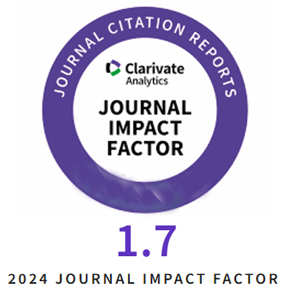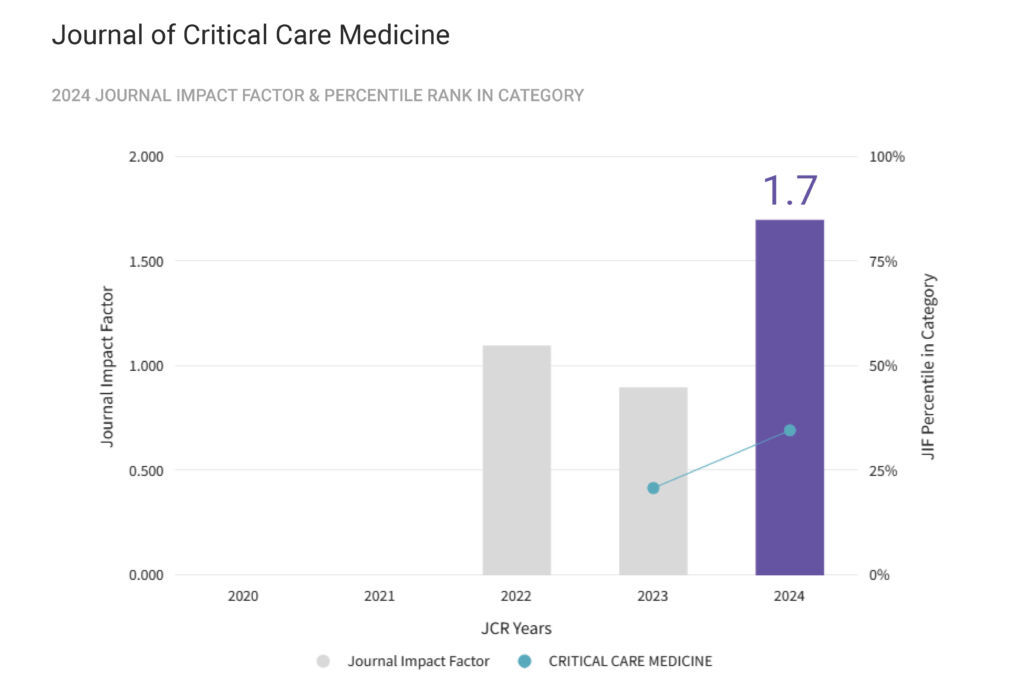Air may extend to the retroperitoneal space from retroperitoneal perforation of a hollow viscus, infection of the anterior pararenal space with gas-forming organisms and from pneumothorax or pneumomediastinum [1]. Rare pathologies, such as open reduction and internal fixation of femoral fractures and anaerobic abscess of the hip joint have also been described in relation to this complication [1,2]. A rare case of pneumoretroperitoneum caused by insufflation of air during an attempt to achieve epidural anesthesia is described.
Category Archives: Case Report
Staphylococcal Scalded Skin Syndrome in Child. A Case Report and a Review from Literature
Staphylococcal scalded skin syndrome (SSSS) is the medical term used to define a skin condition induced by the exfoliative toxins produced by Staphylococcus aureus. The disorder is also known as Ritter disease, bullous impetigo, neonatal pemphigus, or staphylococcal scarlet fever. The disease especially affects infants and small children, but has also been described in adults. Prompt therapy with proper antibiotics and supportive treatment has led to a decrease in the mortality rate.
The current case report describes the clinical progress of a patient with generalized erythema and fever, followed by the appearance of bullous lesions with tendency to rupture under the smallest pressure, and with extended areas of denudation.
The patient aged four years and six months was admitted to our clinic to establish the aetiology and treatment of a generalized bullous exanthema, followed by a skin denudation associated with fever and impaired general status.
Based on clinical and paraclinical examinations a diagnosis of Staphylococcal scalded skin syndrome was established which responded favourably to antibiotic treatment, hydro-electrolytic re-equilibration, and adequate local hygiene.
Staphylococcal infection can represent a problem of significant pathological importance sometimes requiring a multidisciplinary approach involving paediatricians, dermatologists, infectious diseases specialists, and plastic surgeons.
Nosocomial Staphylococcal Toxic Shock. Case Report
Staphylococcal toxic shock syndrome (STSS) is a rare, potentially lethal infection, with a clinical picture of multiple organ dysfunction and shock. The etiology is Staphylococcus aureus exotoxin, while enterotoxins act as superantigens. Most cases are identified in women using a vaginal tampon. A 51-year-old female, with a past medical history of biliary dyskinesia, presented in the emergency room complaining of sudden onset of abdominal pain, vomiting, headache, myalgia, and chills. The initial diagnosis was biliary colic and was treated parenterally with Amoxi-clavulanate and fluid replacement. Initially, progress was unsatisfactory. Four days after admission she developed a systemic inflammatory syndrome, diffuse rash, jaundice, oliguria, confusion, persistent hypotension and biological evidence of thrombocytopenia, nitrogen retention, and cholestasis. She was admitted to the intensive care unit. A gluteal phlegmon induced after intramuscular injections was identified and surgically treated. Blood bacteriological cultures were negative, though MRSA was isolated in phlegmon pus. A diagnosis of STSS was based on CDC criteria.
The risks of similar infections could be prevented by limiting intramuscular treatments and monitoring invasive procedures.
Malignant Middle Cerebral Artery Infarction Secondary to Traumatic Bilateral Internal Carotid Artery Dissection. A Case Report
Traumatic bilateral dissection of the carotid arteries is a rare condition with potentially life-threatening complications. The case of a 57-year-old male patient with acute onset left sided hemiparesis, twelve hours after a blunt head injury, caused by a horse kick, is reported. A cerebral CT scan revealed right middle cerebral artery (MCA) territory infarction. Based on Duplex ultrasound and Angio CT scan findings, a diagnosis of bilateral ICA dissection was established. Despite antithrombotic treatment, the patient presented with a progressive worsening of his neurological status. The control CT scan evidenced malignant right MCA territory infarction that required decompressive craniotomy. The patient was discharged with significant neurological deficits. Together with this case, the aetiologies, clinical manifestations, diagnostic and therapeutical options and outcome of carotid artery dissection are discussed.
Complications of Sepsis in Infant. A Case Report
Sepsis is a systemic inflammatory response (SIRS) characterized by two or more of the following: fever > 38.5 °C or <36 °C, tachycardia, medium respiratory frequency over two SD for age, increased number of leukocytes.
The following is a case of an eight months old, female infant, admitted in to the clinic for fever (39.7 C), with an onset five days before the admission, following trauma to the inferior lip and gum. Other than the trauma to the lip and gum, a clinical exam did not reveal any other pathological results. The laboratory tests showed leukocytosis, positive acute phase reactants (ESR 105 mm/h, PCR 85 mg/dl), with positive blood culture for Staphylococcus aureus MSSA. at 24 hours. Three days from admission, despite the administration of antibiotics (Vancomycin+Meronem), there was no remission of fever, and the infant developed a fluctuant collection above the knee joint. This was drained, and was of a serous macroscopic nature. A decision was made to perform a CT, which confirmed the diagnosis of septic arthritis. At two days after the intervention, the fever reappeared, therefore the antibiotic regime were altered (Oxacillin instead of Vancomycin), resulting in resolution of the fever. Sepsis in infant is a complex pathology, with non-specific symptoms and unpredictable evolution.
The Pitfalls of Febrile Jaundice. A Case Report
Jaundice in sepsis is usually caused by cholestasis, and its onset can precede other manifestations of the infection. Inflammation-induced cholestasis is a common complication in patients with an extrahepatic infection or those with inflammatory processes. We describe the case of a 47 years old female who presented with low back pain and paravertebral muscular contracture. She subsequently developed a cholestatic syndrome with clinical manifestations such as jaundice, followed by fever and sepsis with multiple organ dysfunction. Initially labeled as biliary sepsis, the diagnosis was crucially reoriented as the blood cultures were positive for Streptococcus pyogenes and the magnetic resonance imaging (MRI) findings suggested spondylodiscitis as well as a paravertebral abscess.
The Management of Staphylococcal Toxic Shock Syndrome. A Case Report
Staphylococcal toxic shock syndrome (TSS) is most frequently produced by TSS toxin-1 (TSST-1) and Staphylococcal enterotoxin B (SEB), and only rarely by enterotoxins A, C, D, E, and H. Various clinical pictures can occur depending on severity, patient age and immune status of the host. Severe forms, complicated by sepsis, are associated with a death rate of 50-60%. The case of a Caucasian female infant, aged seven weeks, hospitalized with a diffuse skin rash, characterized as allergodermia, who initially developed TSS with axillary intertrigo, is reported. TSS was confirmed according to 2011 CDC criteria, and blood cultures positive for Methicillin-sensitive Staphylococcus aureus (MSSA). Severe development occurred initial, including acidosis, consumption coagulopathy, multiple organ failures (MOF), including impaired liver and kidney function. Central nervous system damage was manifest by seizures. Clinical management included medical supervision by a multidisciplinary team of infectious diseases specialist and intensive care specialist, as well as the initiation of a complex treatment plan to correct hydro electrolytic imbalances and acidosis. This treatment included antibiotic and antifungal therapy, diuretic therapy, immunoglobulins, and local treatment similar to a patient with burns to prevent superinfection of skin and mucous membranes lesions. There was a favourable response to the treatment with resolution of the illness.
Parkinsonian Syndrome and Toxoplasmic Encephalitis
Toxoplasmosis encephalitis in patients with human immunodeficiency virus may progress rapidly with a potentially fatal outcome. Less common neurological symptoms associated with this are Parkinsonism, focal dystonia, rubral tremor and hemichorea–hemiballismus syndrome.
A 58 year old woman suddenly lost consciousness and was admitted to the emergency service. Her medical history was unremarkable, except for frequent headaches in the last year, recurrent herpes simplex skin lesions and an episode of urticaria. A computer tomography scan showed supra and infra-tentorial lesions on suggestive of cerebral toxoplasmosis. Both Toxoplasma gondii and HIV tests were positive. In the intensive care unit, antiparasitic and antiretroviral drugs were administered, and she recovered from the coma after six weeks but presented with tetraparesis, diplopia, and depression. The LCD4 count increased from 7 to 128/mm3. The neurological lesions slowly resolved over the next two months, although postural instability, rigidity, bradykinesia and predominantly left side tremor persisted. Mild improvement was achieved after the administration of levodopa.
Associated Parkinsonian syndrome in HIV patients is a rare condition, explained by the location of the brain and basal ganglia lesions, and by the observed effect of Toxoplasma gondii which increases dopamine metabolism in neural cells. Early HIV diagnostic and treatment are necessary to prevent neurological disability.
Staphylococcal Toxic Shock Syndrome Caused By An Intravaginal Product. A Case Report
Staphylococcal toxic shock syndrome (STSS) represents a potentially lethal disease, and survival depends primarily on the early initiation of appropriate treatment. As the clinical picture at presentation is usually common, frequently this could lead to misdiagnosis and delays in the initiation of the proper therapy. The case of a 43-years old female who developed a staphylococcal septic shock syndrome caused by a forgotten intravaginal tampon is reported.
Delayed Recovery from General Anaesthesia: A Post-operative Diagnostic Dilemma and Implications of ICU Management of Serotonin Toxicity. Case report
We report a case of delayed recovery from general anesthesia following a routine parathyroidectomy. Our objectives are to describe the process of establishing a differential diagnosis and subsequent management of a patient presenting with atypical neurological signs from an unknown etiology and to increase awareness about the potential for serotonin syndrome and neurotoxicity due to known interactions between methylene blue and selective serotonin-noradrenaline re-uptake inhibitors. ICU management of Serotonin Toxicity is briefly described.










